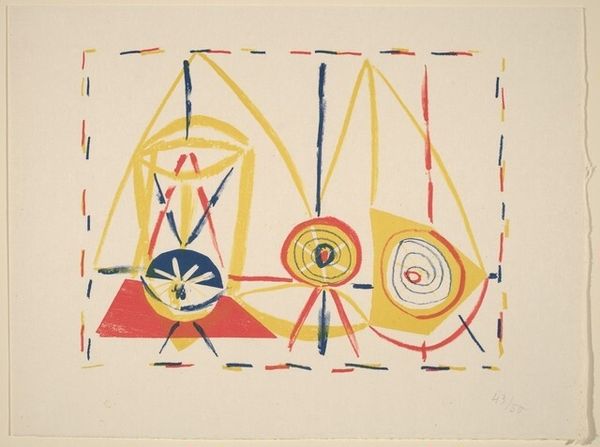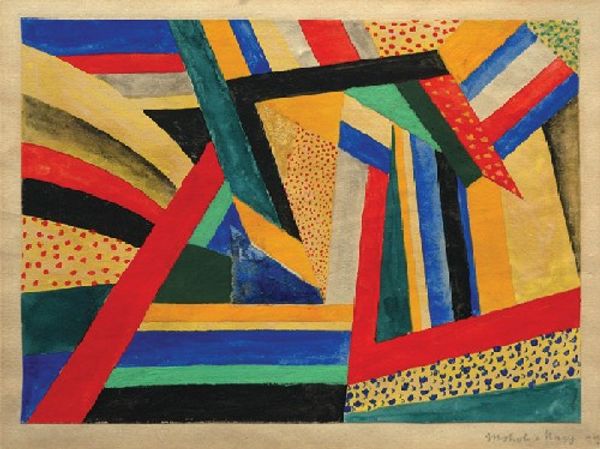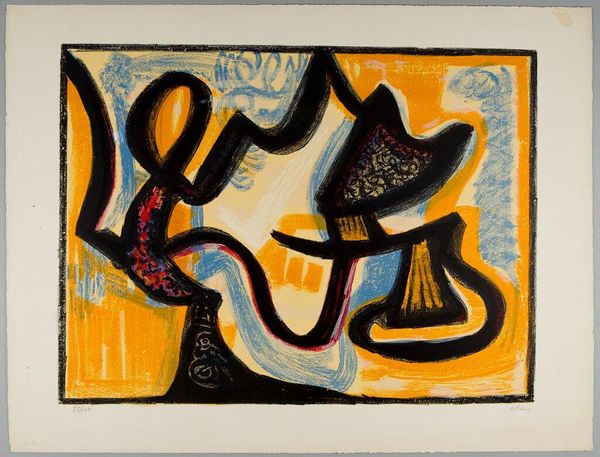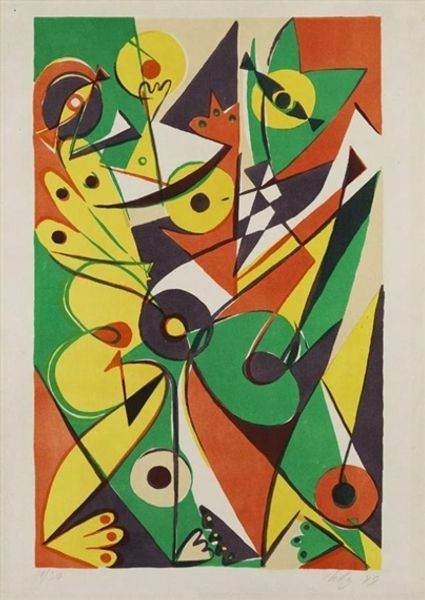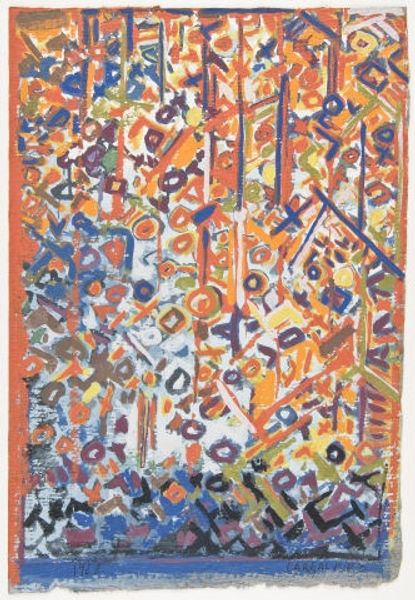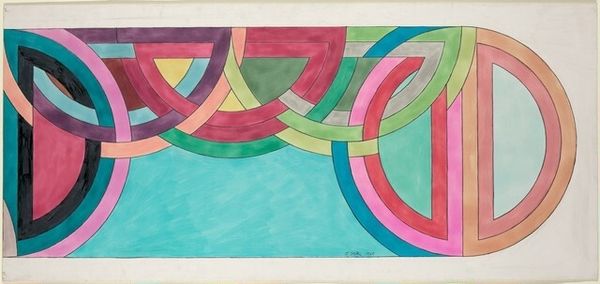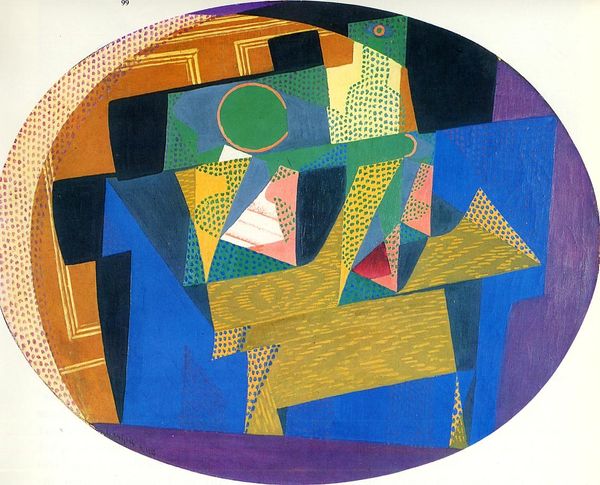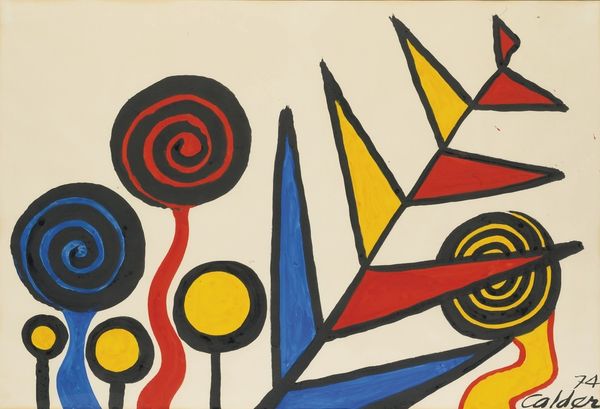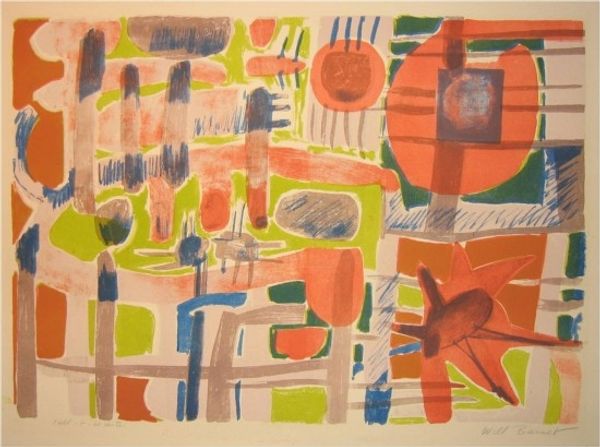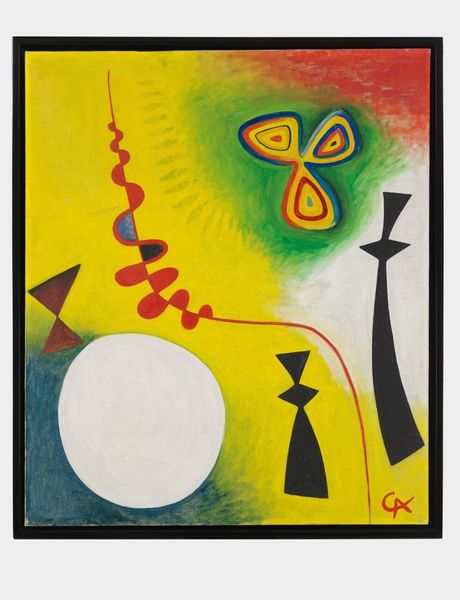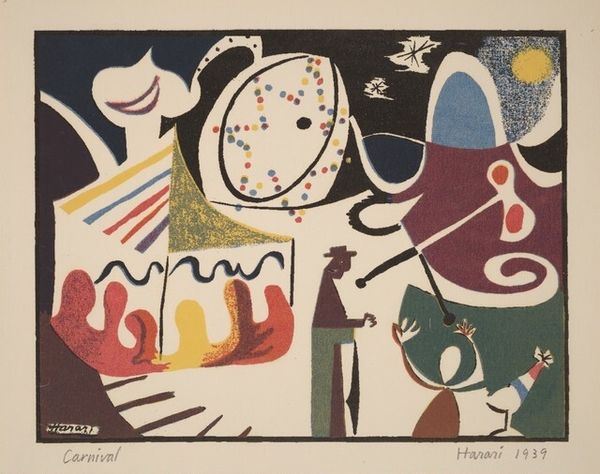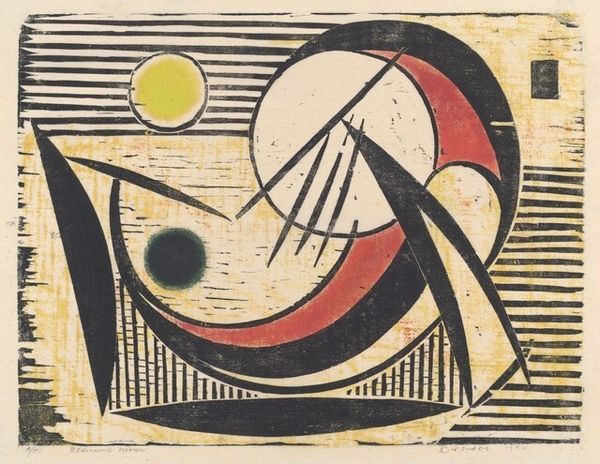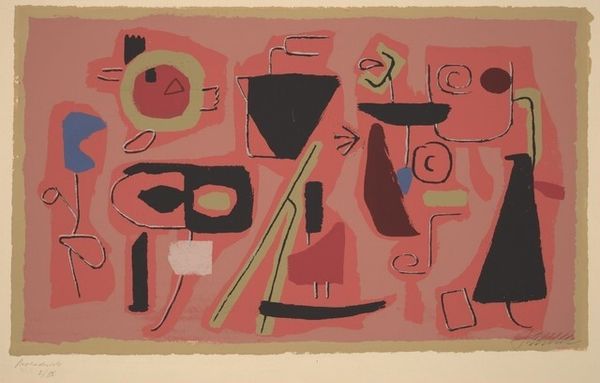
Compostion au verre et a la pomme (Composition with Glass and Apple) 1946
0:00
0:00
print, oil-paint
#
cubism
# print
#
oil-paint
#
abstract pattern
#
organic pattern
#
abstraction
#
modernism
Copyright: National Gallery of Art: CC0 1.0
Editor: This is Picasso’s "Composition au verre et a la pomme", or "Composition with Glass and Apple," from 1946. It seems to be a print, maybe an oil paint print? I'm struck by how simple it is, almost childlike, yet undeniably sophisticated in its abstraction. What can you tell me about this work, from a historical standpoint? Curator: It's interesting you find it childlike. Many saw Cubism itself, and Picasso’s later works, as a return to a primitive form of expression. Considering the date, 1946, right after World War II, do you think that yearning for something simple and unburdened might be reflected in the artwork? Editor: That's a great point. Maybe this simplified, almost playful, representation of everyday objects was a way to find joy and solace after such devastation. It does feel optimistic. Curator: Exactly. Also consider the rising interest in abstraction in the post-war art world. Institutions were embracing non-representational art as a symbol of progress and a break from traditional values – some say it became almost a political statement. How might a piece like this have been received by the art world then? Editor: I imagine it would have been both praised and criticized. Praised for pushing boundaries and embracing modernism, but perhaps also criticized for its perceived simplicity and departure from realism. Curator: Precisely. It highlights how art serves not just as personal expression but is received through a very political and cultural lens that is shaped by institutions, war and history. Editor: I see the relationship between simplicity and finding happiness in this post-war art in a different way now. Curator: And that's the goal of this dialogue. Hopefully now it helps our listeners do so as well.
Comments
No comments
Be the first to comment and join the conversation on the ultimate creative platform.
